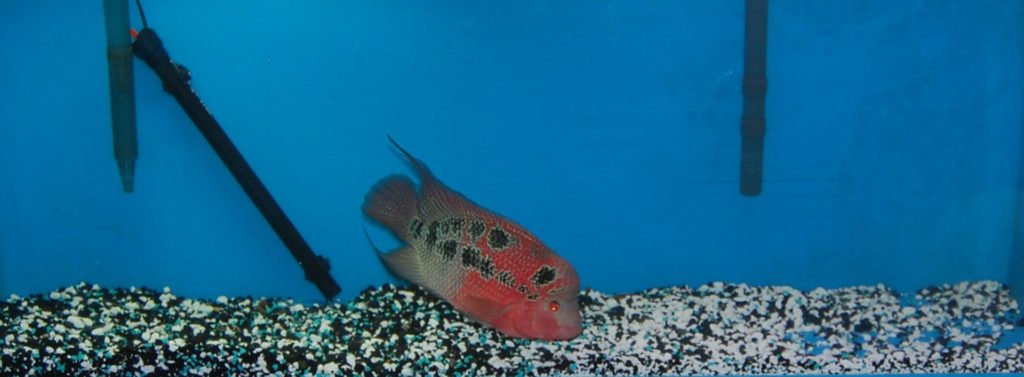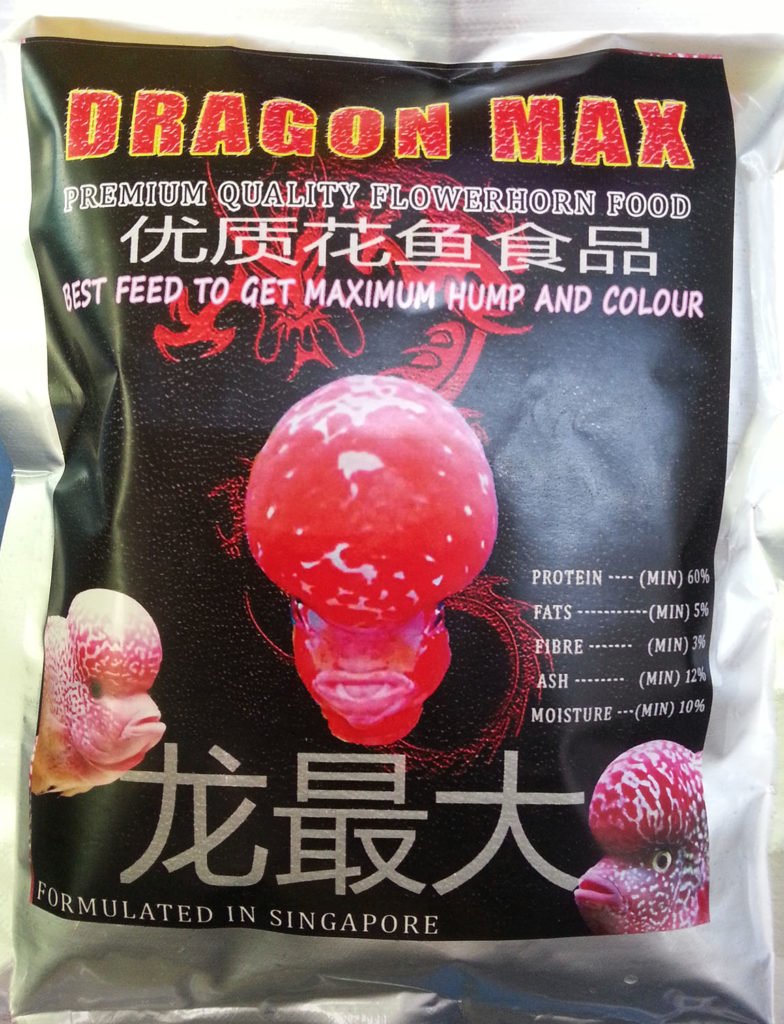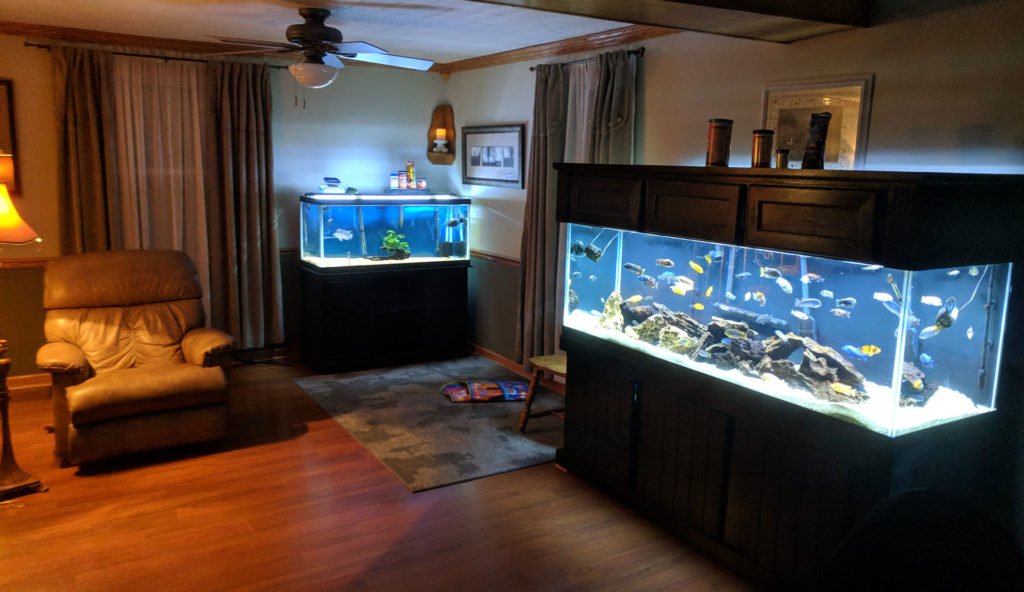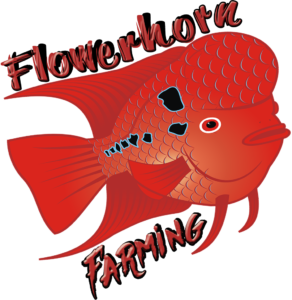Article Contents
The Flowerhorn fish is a unique type of exotic fish with a very interesting character, unusual appearance, and character. Those who have decided to keep a Flowerhorn fish in an aquarium have never regretted it.
The Flowerhorn fish is not very popular but it is definitely one of the most appreciated species. These types of hybrid fishes come from Malaysia.
The cichlids by their characteristics and personality can bring us great satisfaction. Among its species, you can find beautifully colored fish as well as fascinating patterns of behavior, especially during spawning and subsequent breeding. They are more aggressive fish of America and Africa. However, they are incredibly cute. They tend to be very pronounced since their texture is not exaggerated, they are narrow.
In terms of its care, the Flowerhorn fish is a type of fish that get used to very easily in any environment. However, it is very aggressive and that is one of the reasons why you should keep it alone in your aquarium and also there are certain things which you need to take into the account to manage your Flowerhorn aquarium.

Habits and customs of the Flowerhorn fish:
They are fish that like to stay at the bottom of the aquarium, shelters or caves are essential since these animals like to stay inside, especially if the aquarium coexists with other fish. It is noteworthy that they have a strong personality. In fact, they are very territorial among members of their own species, in this regard, it is necessary to have an aquarium sufficiently specific so that each specimen can fix its territory.

Managing your Flowerhorn’s Aquarium:
When dealing with a large-sized Flowerhorn fish, the most important thing is to keep the water filtrate in good conditions. For good water optimization, it is recommended to change 20% of the water every fifteen days. The pH must be between 7.5 and 8, but never more than 8 since it lives in slightly alkaline waters. The temperature should oscillate between 24o and 27o C.
The feeding of the Flowerhorn fish is simple since it takes foods in scales and alive food. It is advisable to give small amounts two or three times a day alternating the type of food.

The male is larger than the female, has the bulge of the larger head and brighter colors. The females, in addition to being smaller, less colorful and less aggressive, can be completely free of frontal humps. Its reproduction is oviparous, parents take care of their children, and care must be taken because there are cases when the make Flowerhorn kills the female.
Many people call them aggressive fish and quarrelsome perhaps their problem is not in their character but in our lack of understanding towards them.
Following are some of the managing tips which will surely help you:
We will start with the container:
A cichlid aquarium, with some exceptions, must be large, sized for the fish we are going to have. Do not forget that cichlids are usually territorial fish, a single specimen or a couple usually defend a fairly large area of the really available in the aquarium, often leaving their neighbors cornered and in constant stress that over time will suffer, dying very soon.
Flowerhorn Aquariums (minimum : 34 gallons)
- AquaVim Glass Corner Tank Aquarium Kit
- AQUAVAS 120cm Complete Freshwater Aquarium System
- Landen 100P 53.5 Gallon Rimless Low Iron Aquarium Tank
- REPTI ZOO Large 34 Gallon Reptile Glass Terrarium Tank
- SeaClear Acrylic Aquarium Combo Set
- SeaClear System II Acrylic Aquarium
- LANDEN 90P 48 Gallon Rimless Low Iron Aquarium Tank
- SeaClear Acrylic Aquarium Junior Executive Kit

Water:
Being normally large and active fish usually, require maintenance in the form of frequent water changes. There are very robust species able to withstand large rates of nitrites without apparent damage but the truth is, an expert aquarist is hardly subtracted from the joy that reigns in an aquarium after a generous change of water. Also, do not forget this point if you want to get the end of every aquarist breeding.
Filtration:
Another important aspect is the filtration. We will never tire of repeating that there are two types of filtration essential for the maintenance of a cichlid aquarium. One is mechanics and the other is biological. The first one is in charge of separating the impurities, like remains of food and plants from the water.
This filter has to be cleaned very frequently to prevent decomposition from entering into operation, releasing byproducts that cannot be eradicated in their entirety except with a generous change of water. The other filtration that concerns us is biological, will be responsible for transforming the by-products of fish metabolism into more or less inert substances any lifeless product of organic origin, if an appropriate colony of bacteria is maintained, is susceptible to this transformation so be generous with the substrate that will house these bacteria.

The food:
Except in some species that only eat a particular food, the food has to be varied, especially if it is alive, you must be careful with the origin of it because it can introduce diseases. Take care especially if you collect yourself live foods in contaminated ponds.
At present there are commercial preparations of very good quality although every aquarist who claims to try to offer their fish the best, sometimes making their own preparations or porridges. These usually contain mainly heart of cow or ox as it is the viscera with less fat, white fish and some vegetable all this chopped and not ground, remember that if it cooks it will lose many of its nutritional qualities. You can also keep it for a long time if you freeze it in small portions.

Another interesting point about the food that we often forget is quantity. In our aquariums, more fish die because of excess food than by default. Obese fish, among other symptoms, tend to form fats around the liver, making their good health more difficult. In aquaculture, a rule is usually observed. It can vary according to species and climates but it is very generalized distribute food to approximately 5% of the body weight of your fish during growth and 2% with respect to maintenance adult Flowerhorn fish. Note that in aquaculture the best and most effective ratio is “food consumed”/”growth achieved”. But you should never exceed this proportion.
Plants:
On the plants, it varies a lot according to the species of cichlid that we maintain in our aquarium. There are species that respect them totally and others that do not consent that there is only one correctly planted. Keep in mind that most of the cichlids are digging fish, in addition, things get complicated if our cichlid begins to eat vegetables.
Indeed, there are many species that need a regular vegetable intake but there is a little trick to at least alleviate this problem. As soon as you see that your fish start browsing on the leaves of your favorite plant, offer them a more tasty plant, for example, lettuce or chard, both cooked and raw.

Other fans instead especially if it is large cichlids choose to put plastic plants as above all today there are frankly very successful. Whether you decide on this last option or not, remember that it will achieve a good effect if it is surrounded by a large plant with several smaller ones.
Assembly and Decoration:
Regarding the assembly and decoration of the aquarium, it is recommended not to include plants, simply a thin layer of gravel and logs or some medium rocks. If for aesthetic reasons you would like to include plants, you can choose to adhere to java moss on rocks or trunks.
The Flowerhorn fish is an extremely aggressive and territorial fish. That is why it is always better to be alone in your aquarium. If you want to have more than one copy, be sure to do so in a very large aquarium, close to or greater than 90 liters.

The decoration is a point to consider before choosing a fish. There are people who think that in an aquarium the main decoration is the Flowerhorn fish and that an excessively overloaded and baroque “theater” is a source of problems. Especially cleanliness and others in return, they see in their aquarium a “piece of nature” and therefore, everything is part of everything.
As always, according to the Flowerhorn fishes that we maintain there are exceptions and therefore options. There are small cichlids that are very comfortable between plants and small hollows and others have an “aesthetic sense” that is not always the same as that of their owner: they will decorate the aquarium to your liking.
Finally, an entry, if you observe something strange in your aquarium, always proceed with caution, unless it is something urgent, sit down and first try to find out the cause, then act accordingly. The rush also an aquarium, are bad counselors.
Aquarium maintenance:
It is necessary to have a spacious urn, longer and wider than high. The volcanic stones and wooden trunks are important for these animals to fix their territory and have cavities to hide. The use of plants is contraindicated for many species since they tend to move them, it is also difficult to maintain them, taking into account the peculiarities required by the aquarium water, keep in mind that, although it is variable depending on the species.
In general, many specimens require a high pH as do the parameters in terms of water hardness which must also be high. However, there are exceptions such as many American Flowerhorn cichlids that demand vegetation. Even another type of water, it is noteworthy that if we choose to introduce plants they must be sufficiently tied to avoid being moved by the animals.
A good filtering system is fundamental since these fish deteriorate the water quite easily, oxygenation is also important for the maintenance of these beautiful aquatic vertebrates. In terms of lighting, as most remain in the background, do not require special lighting conditions, the fluorescent tube seems to be the favorite choice among fans.
LED lamps are a very interesting attraction to recreate a light environment in which beautiful and colorful highlights. Without forgetting that those aquariums where plants are going to be housed will require more specific lighting conditions to favor the growth and development of the same, and they are also necessary if the aquarium is intended for the accommodation of Flowerhorn fish.
Benefits of having Flowerhorn Aquarium in your Home or Office:

• Flowerhorn fish benefits the human mind. Fish tanks help and calm children who suffer from hyperactivity, behavioral disorders, such as difficulty in socializing, excessive aggression, poor school performance or low self-confidence.
• Remembering the schedules and needs of the fish is a good exercise for the memory and concentration of the elderly.
• Several studies indicate that those who enjoy an aquarium at home have their blood pressure below the values of those who lack aquarium.
• The fish remind us of water. These small animals are associated with nature. The bright colors of the fish are an excellent anti-stress, neutralize aggression and transmit good humor.
Important points to consider:
Regarding the pH necessary for the Flowerhorn fish, this cichlid inhabits slightly alkaline waters. The ideal thing to do is to adjust the pH values of water between 7.5 and 8, but never more than 8. The alkalinity can be achieved and kept by placing in the aquarium some small rocks of calcareous origin. These rocks also harden water so you should always consult an experienced aquarist.
An important factor for the development of the Flowerhorn fish is the filtering of water which should be extremely efficient. This is complemented with changes of 15 or 20% of the water every two weeks. With each partial change of water, you can add some granites of salt for aquariums to the aquarium, a quarter of a teaspoon of coffee will suffice and it must be very very little. To keep the water moving, you can play with the filter’s water return.
Flower Horn is usually fed up to 3 or 4 times a day, obviously making sure that each portion is very moderate. It is a very voracious fish so it should not fall into the error of overfeeding.
Some mistakes that you should avoid in your aquarium:
In this part, we explain how to avoid some mistakes that beginners usually make while having Flowerhorn fish in their aquarium. This is a series of very simple tips which do not involve an added cost, and that will help you keep your aquarium in perfect condition.
Keeping a small aquarium is not a difficult task and can provide many hours of healthy and relaxing entertainment. If you get caught up in this fascinating hobby, you will learn a lot about how to care for fish and reproduce their natural environment to always have a fascinating part of nature at your fingertips.
1. Conditioning of the aquarium:
• It is advisable to avoid small aquariums in the form of a ball. They are not suitable for many reasons: they are too small. They do not allow good oxygenation of the water because the surface is small in relation to the volume and its circular shape is stressful for the fish.
• Choose gravel of medium grain because the big stones accumulate a lot of dirt and the small ones prevent the circulation of water underneath. This affects the quality of the water and is harmful to the fish. If you like colored gravels look for a natural, without dyes that can contaminate the water.
• If you are going to host several fishes, it is important to look for an aquarium filter that is appropriate. This can be somewhat costly but the benefits are enormous: you will avoid diseases, fish death, poor water quality, accumulation of waste and you will create a healthy circulation of water inside the aquarium. You can use a filter with a capacity slightly higher than the volume of the tank, so you can be sure that it will be efficient.
• Place some live plants in the aquarium. The plants consume the nitrates and thus they complete the elimination of the nitrogenous remains in the water. If you also have herbivorous fish, the plants will be a source of healthy and natural food.
• Once you have created the home for your new pets, it is time to choose the fish. It is very important because overcrowding causes stress and so many organic wastes are generated that the filter cannot eliminate them at the rate they are produced. If ammonia accumulates in water, it is toxic to fish. On the other hand, choose, that they are not aggressive and that they have the same temperature and feeding needs.
2. Aquarium management and maintenance:
• Do not excessively clean the aquarium. Remember that the aquarium is a living environment, where each bacterium is part of the ecosystem and is necessary for the life of other species. Make partial changes of water every 3-4 weeks or when the tests indicate it. Do not use products to clean the gravel, since there are a lot of bacteria that eliminate nitrogen. Simply remove some of the water from the bottom by siphon and replace it with another clean one without chlorine.
• The aquarium takes time until all the fish that inhabit it are balanced. You should not obsess over their care since you will only get the fish stressed. All maintenance tasks have an adequate frequency and if you are constantly repositioning the ornaments, gravel or filters, you will not allow the ecosystem to thrive. Just relax and watch, you will get to know the personality of each fish and you will be able to tell if anyone is sick.
3. The health of the fish:
• The most important thing in the aquarium is to maintain the health of the fish. When you detect a problem, the first thing you should check is whether the water is in perfect condition. Many times this is the origin of the problem and no need to medicate, just correct some detail or make some partial change of water.
• In case of diseases, avoid using too many medications, as they can damage the health of your Flowerhorn fish. Respect the doses and frequencies of the application indicated by the manufacturer. Do not mix and consult an expert before adding anything in the water. Unless there is a declared infectious disease, it is often preferable to create a calm environment with excellent water quality for the fish to recover naturally.
Finally, if you are a beginner in the world of Flower horn fish, it is preferable that you go little by little. Start with few fishes, few decorations, see learning and progress as you gain experience. This way you will achieve the aquarium of your dreams with the least possible loss of fish and making the most of your budget.
There are surely some questions usually come to your mind. Here are some of FAQs, we have answered here.
Q. What is the ideal temperature of the aquarium for Flowerhorn?
A. Flowerhorn fish thrives in temperature between 20o-30o temperatures. However, recommended or ideal temperature will be around 28o to 31o C.
Q. Is it enough to pet a Flowerhorn in a 20 Gal of the aquarium?
A. If it is for a few weeks or months, it is fine but you cannot keep it in 20 gallons of the tank for a long term. If you will keep a Flowerhorn in a small aquarium, it might your fish get sick and may die because of the limited volume of the water.
Q. Which water is suitable for Flowerhorn fish? Regular municipal water or RO water?
A. It is recommended to use regular municipal water and DO NOT use RO water.
Q. Is it recommended to put holiday food in the aquarium when I am out on vacation?
A. You can go out for a vacation without any worries. A Flowerhorn fish can live without having any food for 20 days. So do not put any holiday food or automatic feeding machine.
